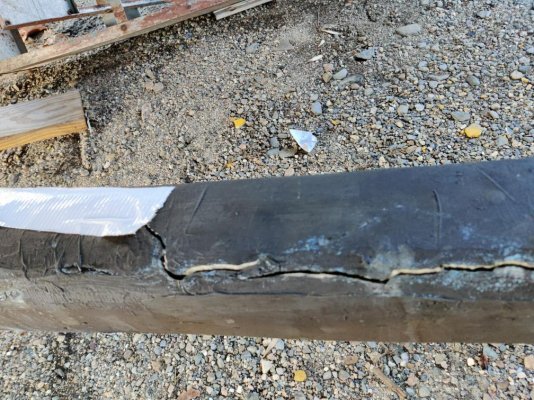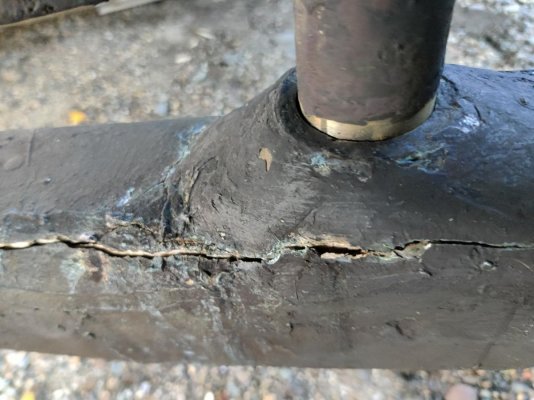That’s not a rudder support technically that is your skeg with a rudder base bearing. When these hulls are popped out of the mold there are no skegs, these are made on the bench or wherever then attached to the keel. Attachments range from mild steel straps, wood, glass whatever they can. The skeg itself can be hollow glass, wood cored or even a wire armature glassed over. Your photos show a longitudinal fracture with no fibers or evidence of cloth reinforcement. It looks like all putty. I’m afraid the best recourse is chop it off and build it right.
BTW the rudder is supposed to be supported by the carrier and collar in the lazarette. The base bearing stiffens up the rudderstock, reduces vibrations and the skeg is supposed to protect the rudder from grounding.
Good luck


